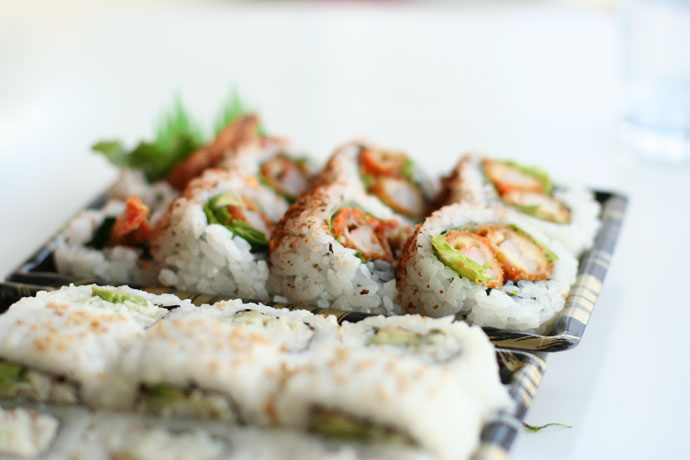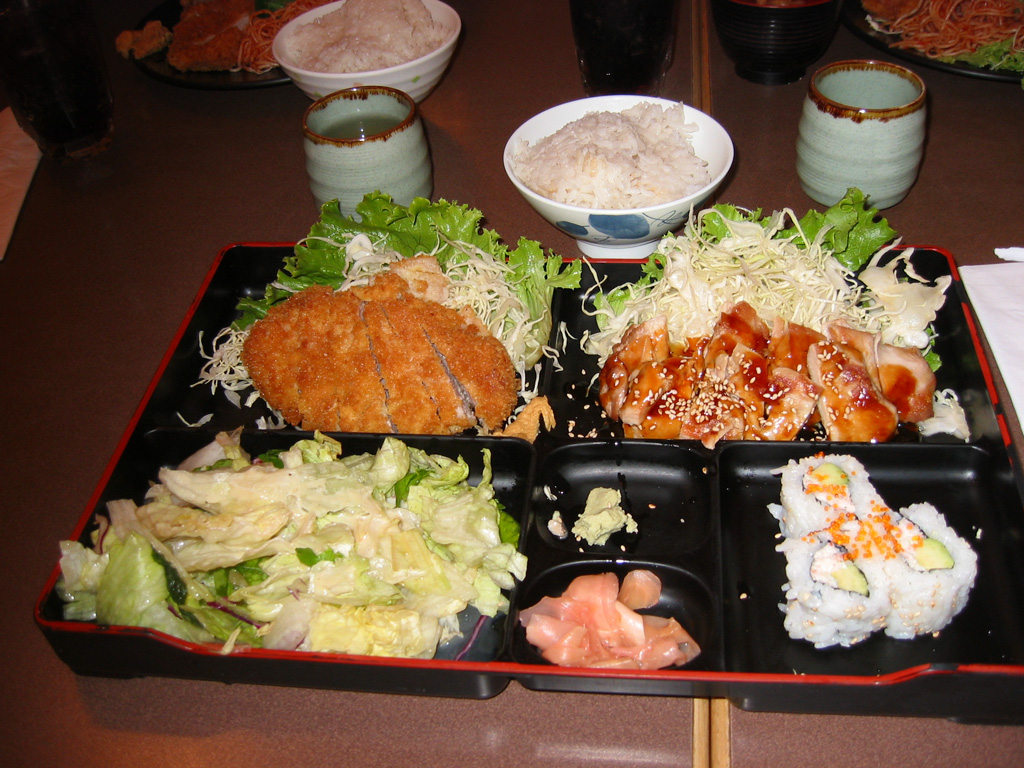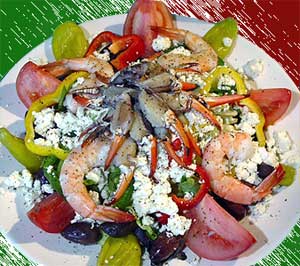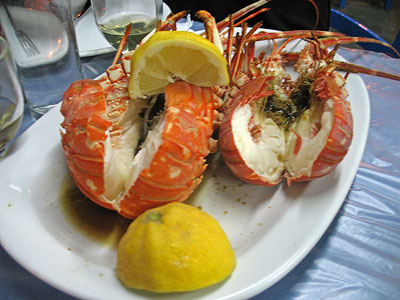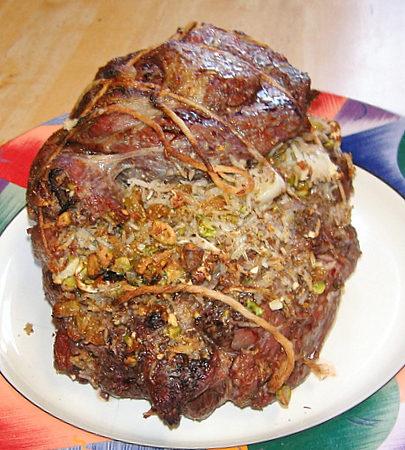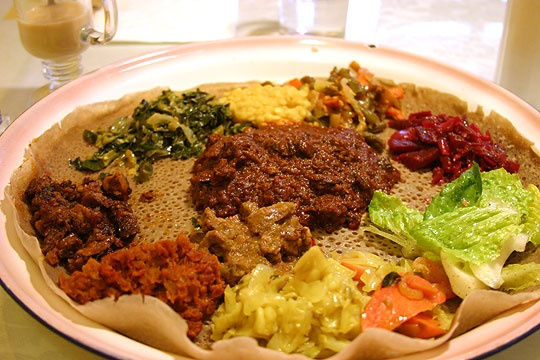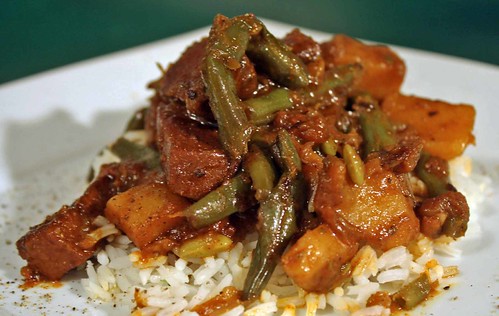Brazilian Foods and Cuisine
Brazilian Foods and Cuisine
Brazil, the largest country in South America, borders every other South American country except Chile and Ecuador. From west to east it stretches nearly 2,700 miles from the Andean foothills eastward to the Atlantic Ocean. Its official name is the Federal Republic of Brazil, or, in Portuguese, the Republica Federativa do Brasil.
It occupies almost half the area of South America and is the world's fifth largest country. Although just slightly smaller than the United States in area, Brazil's population is about 40% less.
Most Brazilians live in the densely populated areas of eastern Brazil. Although urbanization has not produced actual declines in rural population, internal migration has caused cities to grow much faster than rural areas.
The largest cities are Sao Paulo (16 million people), Rio de Janeiro (11 million), Belo Horizante (3.8 million), Salvador (2.3 million), Recife (1.8 million), and Porto Alegre (3.1 million).
Brazil is politically subdivided into 26 states and territories plus the federal district of Brasilia.
Brazilian Foods and Cuisine
Brazil's Eclectic Cuisine
About 1 million native Indians lived in Brazil when the first Portuguese explorers arrived early in the 16th century. Beginning in 1538, almost 5 million Africans arrived before the abolition of slavery in 1888. Portuguese immigrants were followed by Italians, Germans, Syrians, and Lebanese. Asians arrived during the 1930's.
This population mixture has created a national cooking style marked by profound differences. "The cuisine did not evolve, however, by absorbing these influences, eliminating their identity in the process" explains Joan and David Peterson, authors of Eating Smart In Brazil (Ginko Press, 1995). "The distinct contribution of each is still apparent in many Brazilian dishes today. Interestingly, the national cuisine of Brazil is more a collection of unique regional ones."
Brazilian Foods and Cuisine
North (Acre, Amazonas, Amapá, Pará, Rondonia, Roraima, and Tocantins)
Collectively, the region is known as Amazonia for it includes a large part of the rain forest, and tributaries flowing into the Amazon River. Culturally, the Amazon basin is heavily populated by native Indians or people of mixed Indian and Portuguese ancestry who live on a diet of fish, root vegetables such as manioc, yams, and peanuts, plus palm or tropical fruits.
The cuisine of this region is heavily Indian influenced. One popular dish is Caruru do Pará, a one-pot meal of dried shrimp, okra, onion, tomato, cilantro, and dende oil.
Northeast (Alagoas, Bahia, Ceará, Maranhao, Paraiba, Pernambuco, Piaui, Rio Grande do Norte, and Sergipe)
Geographically the region comprises a dry, semi-arid region used for cattle growing inland from the fertile costal plain, an economically important sugar cane and cacao growing area. The spectacular beaches make the coast Brazil's fastest growing tourist region.
Within the State of Bahia the predominate cuisine is Afro-Bahian, which evolved from plantation cooks improvising on African, Indian, and traditional Portuguese dishes using locally available ingredients.
In the remainder of the coastal plains there is less African influence on the food, but seafood, shellfish, and tropical fruits are menu staples.
Inland, in the drought stricken, arid cattle growing and farm lands, foods typically include ingredients like dried meat, rice, beans, goat, manioc and corn meal.
Central-West (Federal District of Brasilia plus Goias, Mato Grosso, and Mato Grosso do Sul)
A region comprising dry open savannahs or prairies with wooded terrain in the north. The famous Pantanal, one of the finest game and fishing regions on earth, is also located within this region.
Fish from the important rivers and beef and pork from the vast ranches of the region dominate the menu, along with the bounty harvested from the agricultural crops of soybean, rice, corn, and manioc.
Southeast (Espirito Santo, Minas Gerais, Rio de Janeiro, and Sao Paulo)
The industrial heart of Brazil is home to the several distinctive styles of cooking.
In Minas the regional dishes include a lot of corn, pork, beans, and local soft ripened cheeses. Around Rio and Sao Paulo a simmered bean and meat dish of Bahian origin, feijoada completa, is popular especially in restaurants as a Wednesday and Saturday luncheon. Also consumed frequently is arroz-feijao, or rice and beans. Traditionally, black beans are prepared in Rio, red or blonde beans in Sao Paulo, and either black or red in Minas Gerais.
In Sao Paulo, the influence of European and North African immigrants is noticed in the region's cuisine. The majority arrived from Italy, along with many from Portugal and Spain, plus other Europeans and Arab countries.
South (Paraná, Rio Grande do Sul, and Santa Catarina)
To the national cuisine the gaucho, or cowboy, contributed dishes made with sun or salt dried meats and churrasco, a meal of wood fire grilled fresh meats.
The immigrant homesteaders, many from Germany and middle Europe plus a few from Italy, were accustomed to a wheat based diet. They were agricultural people who worked the land and introduced wine, leafy vegetables, and dairy products. When potatoes were not available they improvised and discovered the native sweet manioc could be cooked and served in the same way potatoes were served in their homeland.













